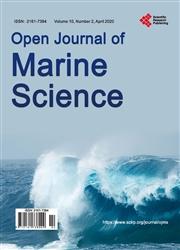New Evidence for Bottlenose Dolphin (Tursiops spp.) Population Connectivity between Kangaroo Island and South Australian Mainland Waters
引用次数: 1
Abstract
Limited information still exists on the movements of bottlenose dolphins in South Australian coastal waters. There is, however, a need to overcome this paucity of information for an effective development and implementation of conservation and management initiatives in these waters that are increasingly threatened by anthropogenic activities. This study infers potential movements of bottlenose dolphins (Tursiops spp.) between Kangaroo Island that separate and shelter South Australian coastal waters from the Southern Ocean swell, and the South Australian mainland (The Fleurieu Peninsula and The Adelaide Dolphin Sanctuary). Bottlenose dolphins were identified from three separate photo-identification catalogues collated from around the South Australian coastline. Of the 3518, 654 and 181 dolphins sighted in Kangaroo Island, Fleurieu Peninsula and the Adelaide Dolphin Sanctuary, 233, 74 and 40 individuals were recognizable, respectively. Resighting rates were similar in Kangaroo Island (70.4%) and Fleurieu Peninsula (75.7%), but much lower in the Adelaide Dolphin Sanctuary (35%). Ten individuals were resighted between Kangaroo Island and the Fleurieu Peninsula, whilst no matches were made between these two locations and the Adelaide Dolphin Sanctuary catalogue. This suggests a longitudinal connectivity between Kangaroo Island and South Australian mainland waters, but a lack of latitudinal connectivity that may result from the physical stratification processes that separate northern and southern South Australian waters. Our results also demonstrate the highly mobile nature of this species within South Australian waters as well as establish photo-identification as an effective non-invasive tool in which to monitor long-term movement patterns).袋鼠岛和南澳大利亚大陆水域之间宽吻海豚种群连通性的新证据
关于宽吻海豚在南澳大利亚沿海水域活动的信息仍然有限。但是,有必要克服这种缺乏资料的情况,以便在这些日益受到人为活动威胁的水域有效地发展和执行养护和管理倡议。这项研究推断出宽吻海豚(Tursiops spp.)在袋鼠岛和南澳大利亚大陆(Fleurieu半岛和阿德莱德海豚保护区)之间的潜在运动。袋鼠岛将南澳大利亚沿海水域与南大洋的巨浪分开并提供庇护。宽吻海豚是从南澳大利亚海岸线上整理的三个独立的照片识别目录中识别出来的。在袋鼠岛、弗勒留半岛和阿德莱德海豚保护区发现的3518头、654头和181头海豚中,分别有233头、74头和40头是可识别的。袋鼠岛(70.4%)和Fleurieu半岛(75.7%)的再栖率相似,但阿德莱德海豚保护区(35%)的再栖率要低得多。在袋鼠岛和弗勒留半岛之间发现了10只,但这两个地点与阿德莱德海豚保护区的目录没有匹配。这表明袋鼠岛和南澳大利亚大陆水域之间存在纵向连通性,但缺乏纬度上的连通性,这可能是由于分隔南澳大利亚北部和南部水域的物理分层过程造成的。我们的研究结果还证明了该物种在南澳大利亚水域的高度流动性,并建立了照片识别作为一种有效的非侵入性工具,用于监测长期的运动模式)。
本文章由计算机程序翻译,如有差异,请以英文原文为准。
求助全文
约1分钟内获得全文
求助全文

 求助内容:
求助内容: 应助结果提醒方式:
应助结果提醒方式:


